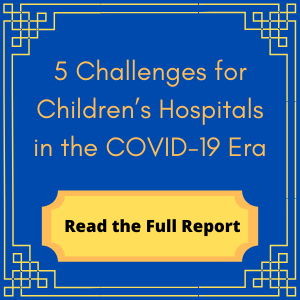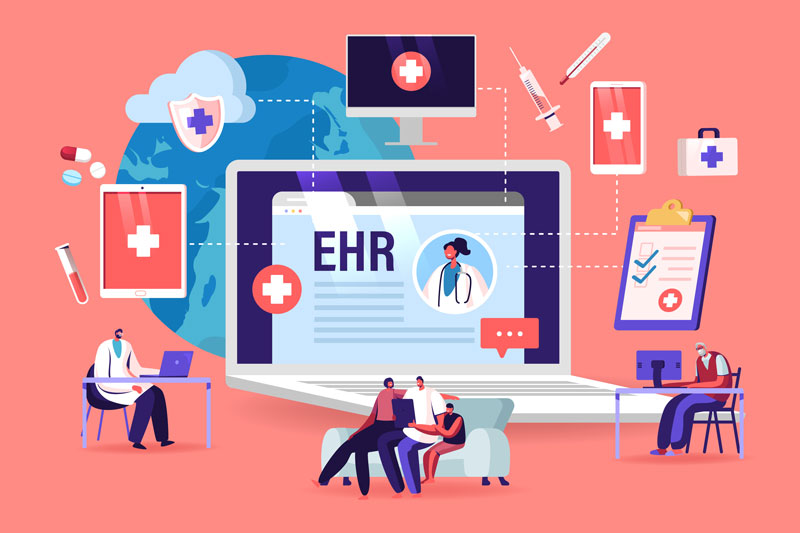There have been some disturbing new developments as it relates to children and the COVID-19 pandemic, with several children in North America and Europe coming down with an inflammatory response to COVID-19. That development is now top of mind when it comes to how children’s hospitals are treating kids during this pandemic.
We previously examined how the COVID-19 pandemic has affected operations at children’s hospitals. It has also changed several aspects of clinical care to children. And analytics is helping children’s hospitals better navigate the challenges. Let’s examine.
COVID-19 patient care
While most pediatric patients who contract COVID-19 experience mild symptoms of the virus, hospitalization does still occur in this age group. Statistics from the United States Centers for Disease Control (CDC) show that 5.7% of known pediatric cases of COVID-19 require hospitalization.
It is known that patients who have underlying conditions suffer worse outcomes than those without these conditions, so COVID-19 is particularly worrisome for medically fragile children. Now with the multi-system inflammatory syndrome, providers also need to be diligent when it comes to children without underlying conditions who present with severe symptoms.
Children’s hospitals need to be able to isolate their COVID-19 patients so they can still care for their medically fragile children without fear of spreading infection. They also need to understand key data points on their COVID-19 patient population.
Medically fragile children and other underlying conditions
About 10% of children admitted to hospitals every year is considered medically fragile, meaning they have serious, ongoing medical issues such as heart disease, cerebral palsy, cancer, cystic fibrosis, and more.
In addition, there are many other children and teens who have other underlying health issues due to smoking, vaping, and drug use. In particular, vaping is very concerning to doctors, because not only has it grown at an alarming rate over the last several years (more than 37% of 12th graders report they vaped over the previous year), but also vaping compromises lung function. There are many concerns with the effect of vaping on those who contract COVID-19.
Download our featured resource:
“8 Ways Analytics Can Help Children’s Hospitals During the COVID-19 Pandemic”
Routine care
Of course, children do still get sick, or require emergency care, or are due for well visits. While many well visits can be deferred, some – particularly for children under age 2 – need to continue, especially to keep up with vaccination schedules.
Some children’s hospitals are consolidating routine care by temporarily closing satellite facilities and moving care to fewer locations. Or well visits are being done during a certain time of day with sick visits happening at another time, such as well visits in the morning and sick visits in the afternoon.
Many patient visits are also being moved to telemedicine when possible. For example, some sick visits can be conducted over telemedicine since the provider can visually see patients to see their demeanor and listen to their coughs. Many well-visits are also being moved online, with the option to come back in person for height, weight, and vaccinations once the COVID-19 threat has diminished.
How analytics can help address these challenges
Analytics can help children’s hospitals better understand and act on these challenges. Here are some of the ways to use analytics:
- Understanding COVID-19 patient population: Analytics can help children’s hospitals understand key data points such as number of moderate cases, severe cases, tests given, positive tests, age and gender of patients, and more. It can also help them understand where patients are in the hospital and what staffing resources need to be dedicated to those patients.
- Managing medically fragile children: Hospitals can flag patients with underlying conditions and segment them out during analyses so they can track and compare outcomes.
- Monitoring ongoing conditions: Providers can monitor the outcomes of their smoking and vaping cessation efforts and proactively reach out to patients to provide them with the support they need, such as through telehealth sessions.
- Managing routine care: Capacity management functionality can help hospitals understand the impact of closing satellite locations and consolidating care. Analytics can also help manage vaccination schedules and push out alerts to providers when children are due for their shots.
- Telemedicine: Analytics helps providers better understand key data points so they can deliver better, faster, and more meaningful service to patients.
Learn more
To learn more about how children’s hospitals can use analytics to meet their COVID-19 challenges, read our white paper, “5 Challenges for Children’s Hospitals in the COVID-19 Era.”
- Navigating the Future: Trends in Wine Tasting Rooms - July 16, 2024
- Why You’ll Want to Attend DIUC24 - June 20, 2024
- The Role of Technology in Solving Nursing Challenges - May 6, 2024




